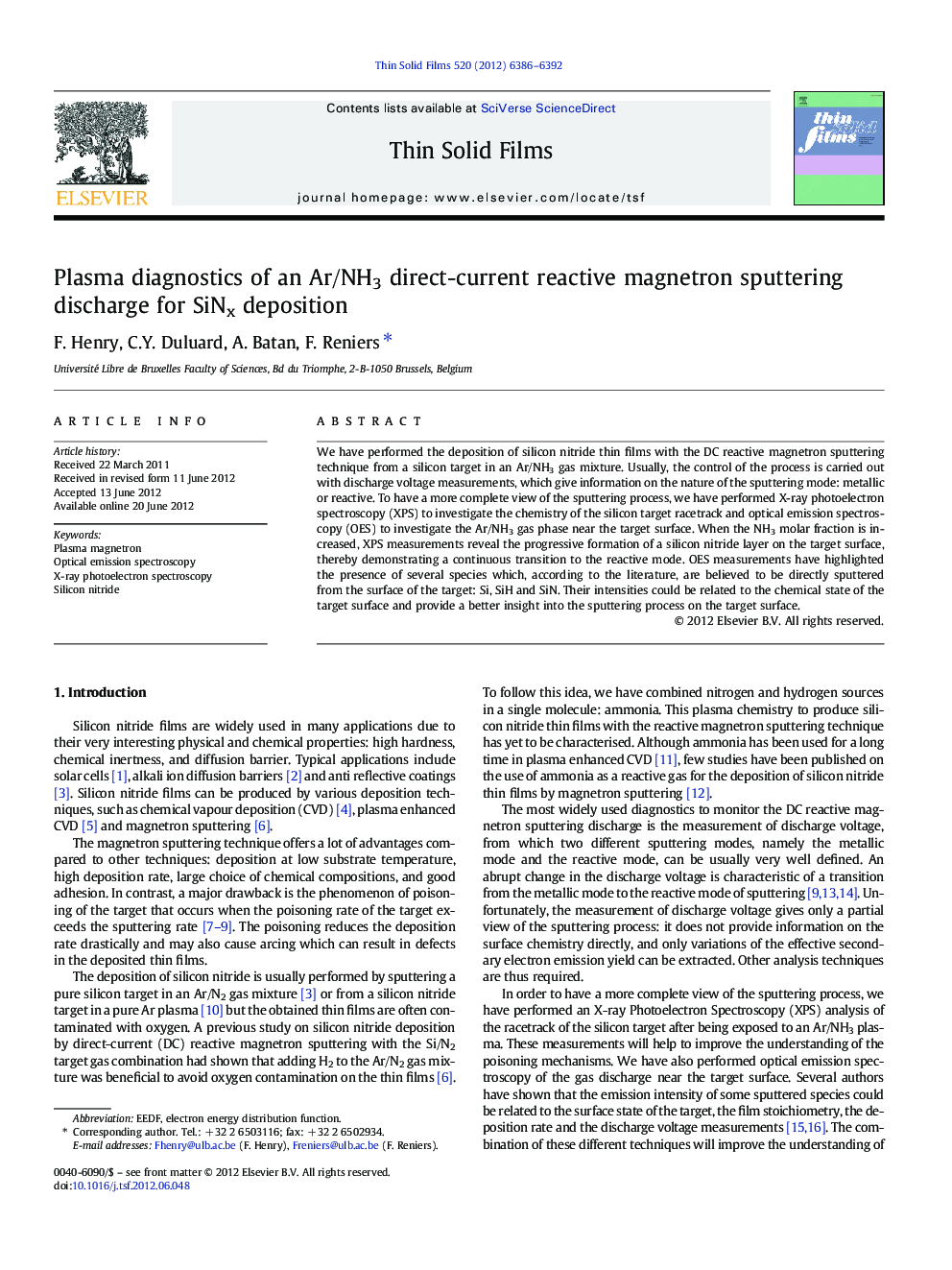| Article ID | Journal | Published Year | Pages | File Type |
|---|---|---|---|---|
| 1667045 | Thin Solid Films | 2012 | 7 Pages |
We have performed the deposition of silicon nitride thin films with the DC reactive magnetron sputtering technique from a silicon target in an Ar/NH3 gas mixture. Usually, the control of the process is carried out with discharge voltage measurements, which give information on the nature of the sputtering mode: metallic or reactive. To have a more complete view of the sputtering process, we have performed X-ray photoelectron spectroscopy (XPS) to investigate the chemistry of the silicon target racetrack and optical emission spectroscopy (OES) to investigate the Ar/NH3 gas phase near the target surface. When the NH3 molar fraction is increased, XPS measurements reveal the progressive formation of a silicon nitride layer on the target surface, thereby demonstrating a continuous transition to the reactive mode. OES measurements have highlighted the presence of several species which, according to the literature, are believed to be directly sputtered from the surface of the target: Si, SiH and SiN. Their intensities could be related to the chemical state of the target surface and provide a better insight into the sputtering process on the target surface.
► Plasma diagnostics of Ar/NH3 DC reactive magnetron sputtering. ► Multiple diagnostic techniques. ► Poisoning of the target by formation of silicon nitride layer. ► Relation between the light emitted by the plasma and the surface state of the target.
